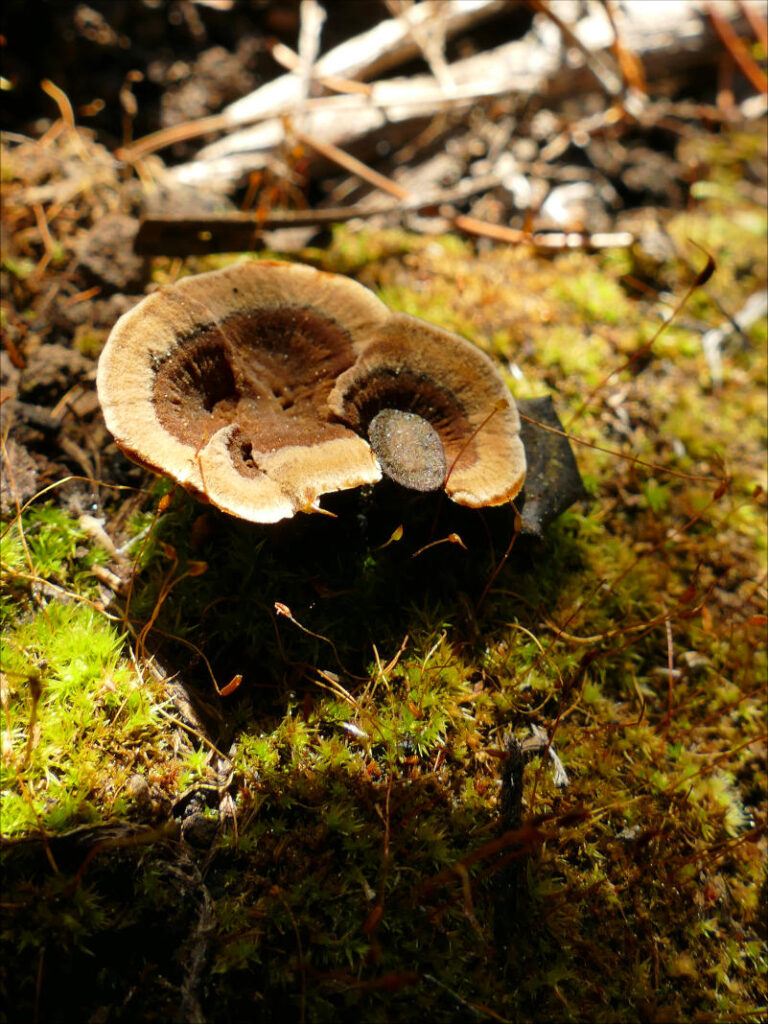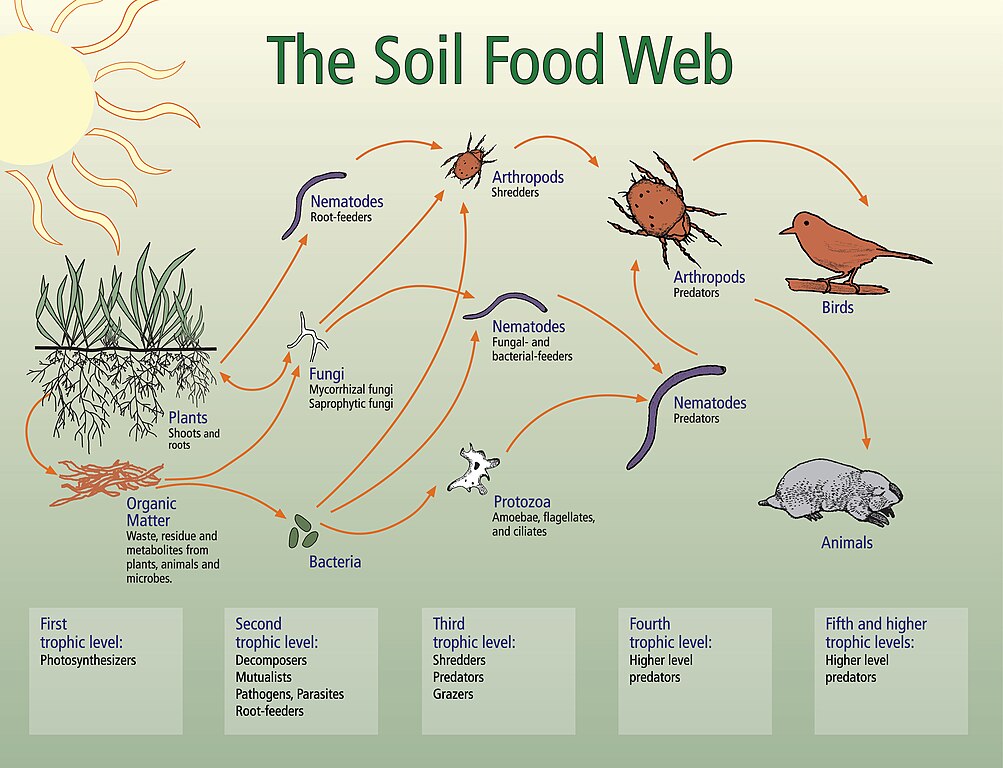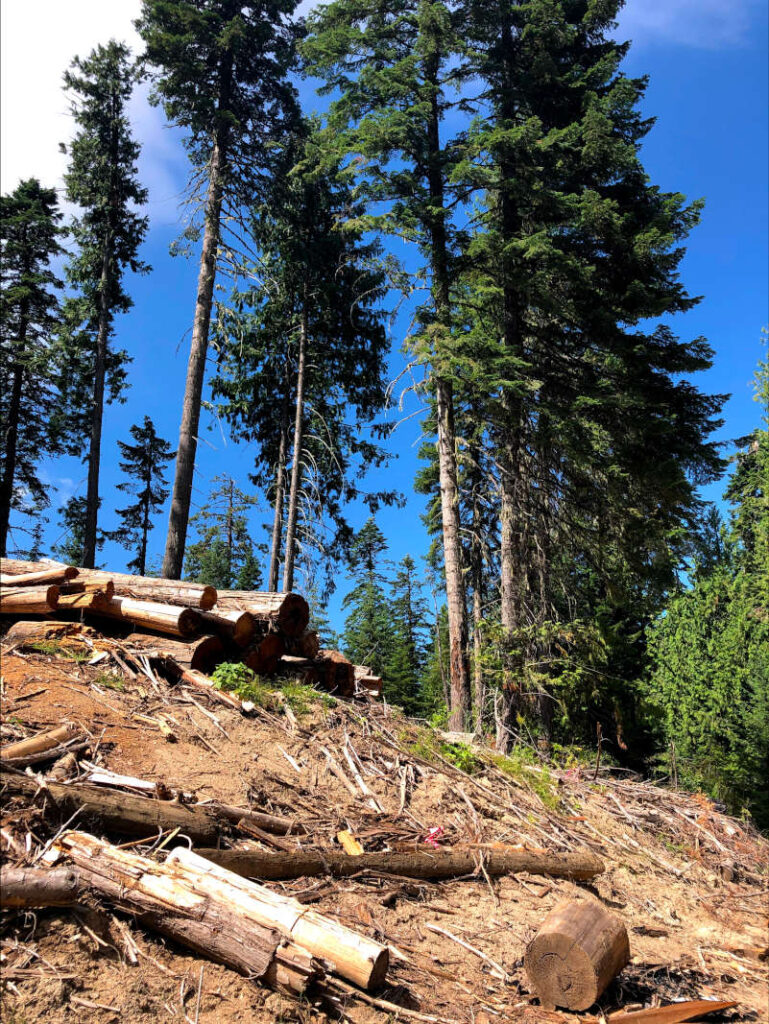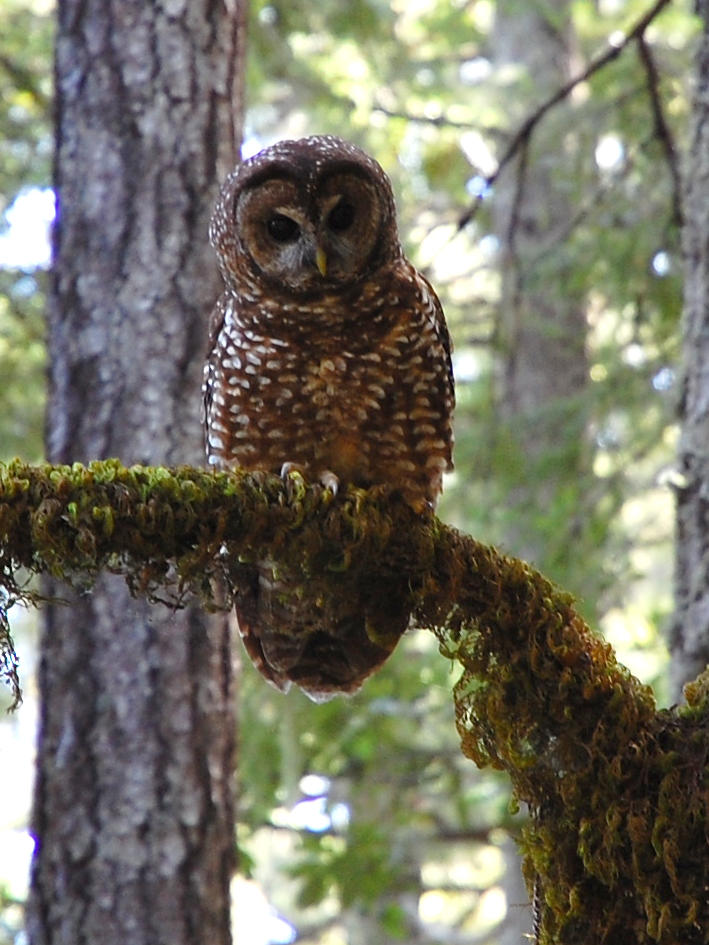“…trees and plants have agency. They perceive, relate, and communicate; they exercise various behaviors. They cooperate, make decisions, learn, and remember—qualities we normally ascribe to sentience, wisdom, intelligence.
"By noting how trees, animals, and even fungi—any and all nonhuman species—have this agency, we can acknowledge that they deserve as much regard as we accord ourselves.” —
Suzanne Simard, Finding the Mother Tree: Discovering the Wisdom of the Forest

In our efforts towards conservation of wild forests, we often invoke the concept of “biological diversity.” To most people, the term brings to mind the multitude of native fish, wildlife, and plant species and how those species interact with one another in our favorite wild places.
And during our visits to these places, although we often notice things like mushrooms or millipedes on the forest floor, seldom do we contemplate the diversity they might signify for the vast assemblage of species living beneath the ground’s surface.
"The soil harbors huge reservoirs of biological diversity, with over 40% of terrestrial organisms associated with soils during their life cycle."
The soil harbors huge reservoirs of biological diversity, with over 40% of terrestrial organisms associated with soils during their life cycle. This reservoir includes animals such as nematodes, oribatid mites, enchytraeids, tardigrades, springtails, ants, ground beetles, centipedes, millipedes and earthworms, fungi, the single-celled bacteria and archaea, and protists, (a kingdom separate from animals, plants or fungi which includes algae, amoebae and slime molds). Together these organisms comprise the “soil food web” where one thing eats another—or is eaten—and so forth.

Despite longstanding scientific investigation, general public awareness of this underground ecology has been limited. In recent years this has changed, thanks in part to groundbreaking research by ecologist Suzanne Simard of the University of British Columbia, and reports of her discoveries in popular media. Her research centers on connection and communication between organisms in forest ecosystems as facilitated by mycorrhizal (fungal) networks, and the intricate symbiotic relationships thus formed between organisms of different species.
“Most life on land depends ultimately on one relationship: the mycorrhiza, the intimate and mutually dependent coexistence of fungi and the root systems of plants.” — E.O. Wilson
The profound role of fungi was noted by the renowned biologist E.O. Wilson, who once wrote, “Most life on land depends ultimately on one relationship: the mycorrhiza, the intimate and mutually dependent coexistence of fungi and the root systems of plants.” Mushrooms, the fruiting body of fungi, are just the tip of the iceberg. The main fungal body is the mycelium, the mass of tissue growing in soil and other substrates such as dead wood or other biomass. In turn, mycorrhizae are part plant, part fungus, consisting of the mycelia and the roots of plants. But it is the mycorrhiza’s functions that are most fascinating.
Consider a genus of fungi, Rhizopogon, commonly known as a false truffle. They form mycorrhyzae with several conifer tree species. Mycorrhizae might appear as a swollen, whitish mass of mycelium surrounding the tips of tree roots. It is the structure where water and nutrients exchange between the Rhizopogon and the tree, to the benefit of both. The Rhizopogon mycelium absorbs water and other essential nutrients such as nitrogen from the soil more efficiently than roots, due to the fact that the hyphae (filaments that make up the mycelium) are able to penetrate small spaces and efficiently extend much more widely than tree roots. And while trees thus receive enhanced access to building blocks essential for growth in this symbiotic relationship, in turn the Rhizopogon feed on carbon (energy) in the form of plant sugars produced by trees. There are potentially multitudes of different fungal species in a given ecosystem, effecting similar and often quite different roles as networking entities.
The complexity of mycorrhizae’s ecological roles are astounding. Following a hunch, Simard fed CO2 concentrated with a radioactive carbon isotope to individual trees via plastic bags placed around their branches. Recall that plants need carbon dioxide from the atmosphere along with sunlight to photosynthesize and grow. To her delight, she soon found an increase in radioactive carbon in the composition of surrounding trees. It turns out that the mycorrhizal network facilitates sharing of nutrients between trees! And the trees don’t even have to be of the same species.
Trees can share water, nutrients, and even information between themselves
The plot thickens further. Scientists have found that large, old trees tend to be more connected to neighboring trees through this mycorrhizal network than the younger ones. These hub trees literally influence the health and fitness of all the trees in the forest, leading to the notion of “mother trees.” And they act selectively; feeding seedlings that might be shaded and therefore otherwise unable to survive. Or transferring resources from dying trees to healthy ones. Oddly enough, there are even accounts of the roots of stumps being kept alive through this network, years after the tree was cut and its photosynthesis halted. It even turns out hub trees can favor offspring from their own seed more than unrelated trees of the same species.
The complexity of chemical transmission between plants goes beyond nutrient transfer. Information itself is a currency. In the human body, glutamate and glycine are common neurotransmitters facilitating signals in brain and spinal tissue across synapses (the connections between neurons, or nerve cells). In plants, glutamine and glycine are involved in triggering the aforementioned exchange of nitrogen and carbon through mycorrhizal networks, and they also help to facilitate fundamental metabolic functions within plants. Experimentally, stress signals have been shown to transfer from injured plants to healthy ones across mycorrhizal networks even more rapidly than carbon, nutrients or water. Healthy plants can then produces defense enzymes, increasing their resistance to the pest afflicting their neighbors.
Since it’s commonly accepted that neural connections facilitating the functioning of the human brain and nervous system give rise to what we call “intelligence”, this begs the question—do trees, plants, or other non-animal life forms also possess intelligence? Our own nervous systems control internal biological functions, and also muscle activity effecting behaviors we see as signs of intelligence. So is this ecological entity we call a “forest“ exhibiting intelligence, given the complexity of the below-ground connectivity between organisms, given the behaviors it facilitates?

These communication networks not only appear underground. In response to attack by defoliating insects, trees transmit airborne volatile chemical signals. Scientists have found that, neighboring trees cued by those signals are able to marshal defenses against the defoliating insects.
Here’s an example of another, more complex network. Some fungi cause tree decay, leading to woodpeckers being able to excavate nest cavities, which are later used as nests and dens for other species, such as squirrels, who eat false truffles and thus spread spores, benefitting trees by the creation of mycorrhizal networks, which help to grow large trees, which eventually provide decaying wood structures for woodpeckers.
It turns out there are many such networks interacting with each other, nested within what is called a “meta-network.” These meta-networks provide for interactions and feedback among the various connected entities, leading to structure and function that define “complex adaptive systems.” In such systems, change and adaptation occur constantly as a result of these interactions. Is this intelligence?
Some would answer yes, because individuals they study perceive, process, and communicate with other organisms and the environment, and remember and use this information to learn, adapt, and heal themselves and others. Another scientific view is that, within this meta-network, a forest’s mycorrhizal networks are most crucial in organizing other networks, given their critical role in establishment and growth of trees. Fungi are “keystone” species because they are vital nodes in this network of connectivity. Russula brevipes, for example, is a fungal keystone species which has the most connections to other species in mature forest ecosystems.
This essay barely scratches the surface of what scientists have discovered about these complex adaptive systems. And of course, science itself is a process that leads to far more questions than answers. But clearly, as major actors on this stage of life on earth, humans play an outsized role. And far too often, our acts sever natural connections, resulting in vast unintended consequences, literally shaking the foundation of the life-giving biosphere, these complex adaptive systems that have given rise to our very existence.
"What does matter—to our very survival—is what humans believe about other living things"
This calls into question what exactly is “intelligence”, and who or what actually possesses it. Because the term is of our own creation, perhaps the question itself is not so relevant. What does matter—to our very survival—is what humans believe about other living things, forests, ecosystems, and even the entire biosphere, and our actions based on those beliefs, and ultimately, the consequences of our actions. For example, in North America what little is left of the vast, pre-settlement extent of old-growth forests is still being targeted for clearcutting—even in national forests. Also, in the U.S. Northern Rockies “treatments” are proposed allegedly to “enhance” old growth, reflecting the prevailing management paradigm of dominating and controlling nature rather than acting in harmony in the acknowledgement that we actually know so little about these wondrous forests. Does anyone really believe that ripping centuries old trees from the web of life is enhancing anything but greed?

In “The Social Life of Forests” writer Ferris Jabr wrote in the New York Times, “The razing of an old-growth forest is not just the destruction of magnificent individual trees—it’s the collapse of an ancient republic whose interspecies covenant of reciprocation and compromise is essential for the survival of Earth as we’ve known it.” This theme of reciprocation, between humans and the plants, animals, and spirits of the natural world, is common in the myths, lessons, and other stories handed down over countless generations of aboriginal peoples. This wisdom has been largely dismissed by the empires that have largely conquered and displaced native cultures, too often with tragic genocidal consequences. To the degree we yet fail to heed this ancient wisdom, western civilization—and humanity itself—approaches the brink of its own tragic demise.
Of her book “Finding the Mother Tree” Suzanne Simard states:
“This is a book—not so much about us saving trees, it’s more about how the trees will save us.”
The connections she describes are lessons to us, from the trees and from everything they touch. If we heed those lessons—if we allow ourselves to feel the connections—like the mother trees we will be able to grow, heal and truly enhance.
Friends of the Clearwater
PO Box 9241
Moscow, ID 83843
(208) 882-9755